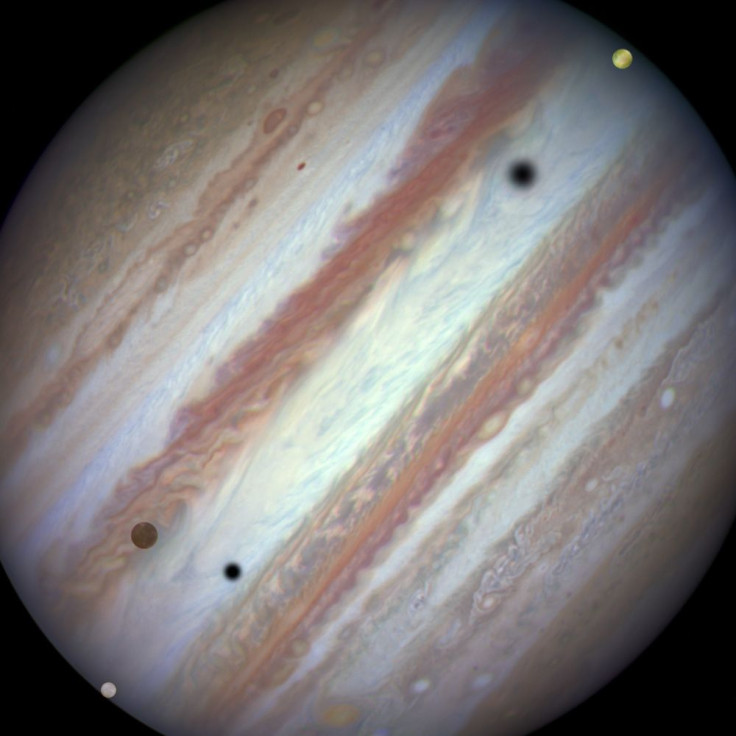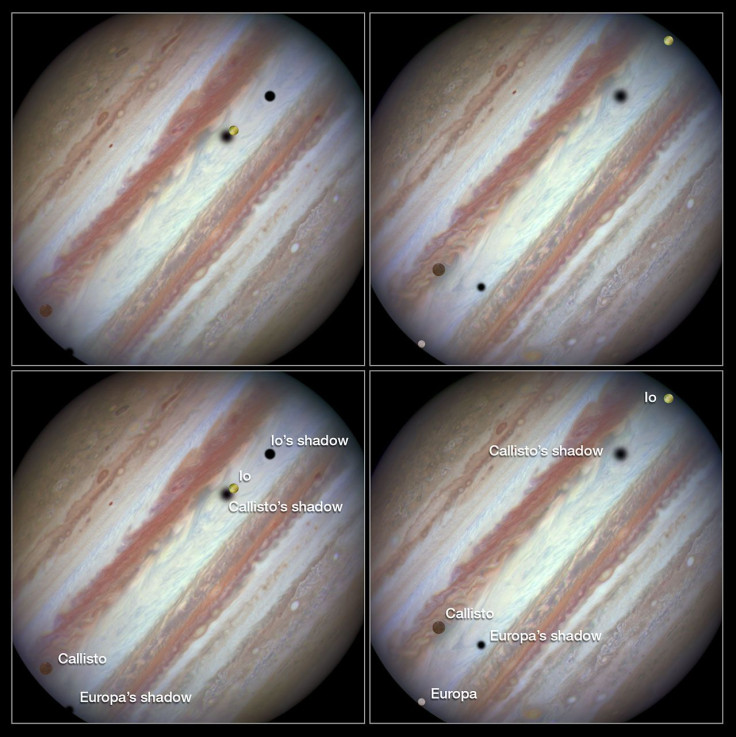Hubble Captures A Parade Across Jupiter As Europa, Callisto And Io ‘March’ In Front Of The Gas Giant

Comet Lovejoy was not the only anticipated astronomy event in January. While Lovejoy could be seen from Earth with binoculars, amateur astronomers with a decent telescope had their sights set on Jupiter. There was a rare triple transit of the gas giant's Galilean moons on Jan. 23, and the Hubble Space Telescope observed Io, Callisto and Europa in stunning detail as they made their way across Jupiter.
Hubble observed Jupiter and the three moons for a little over 40 minutes. Callisto, the second largest Jovian moon (it's slightly smaller than Mercury), has an orbital period of around 16.7 days, while Io has an orbital period of around 1.8 days and Europa's is 3.5 days. Each of the four Galilean moons, including Ganymede, are tidally locked to Jupiter, which means one side of the moon is always facing the planet. Ganymede is the largest moon in the solar system, followed by Saturn's Titan, Callisto, Io and Earth's moon.

At the beginning of Hubble's observation of the triple transit, Callisto and Io make an appearance while Europa lags. By the end of the session, the three moons are in Hubble's frame. The three moons are easily recognized by their different colors: Europa is an off-white, Callisto is brown and Io is yellow-orange.
Europa has been making headlines since President Barack Obama announced the 2016 budget request for NASA. As part of the proposed $18.5 billion for the space agency, $100 million was set aside for a robotic mission to Europa. Jupiter's moon is a top priority as it could have an ocean beneath its icy surface. Based on the presence of water ice that makes up Europa's surface and general chemistry, many experts believe the moon has the best chance of harboring life in the solar system.
A video of Hubble's complete observation of the triple transit can be viewed below.
© Copyright IBTimes 2024. All rights reserved.












